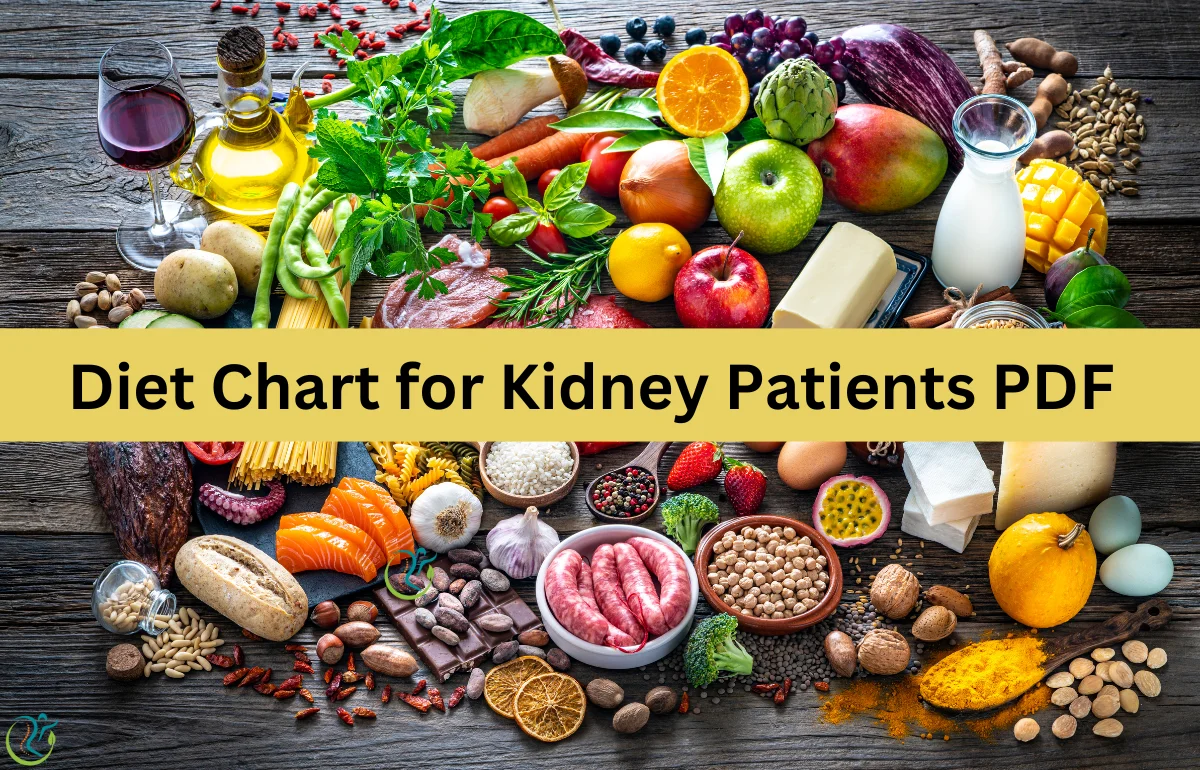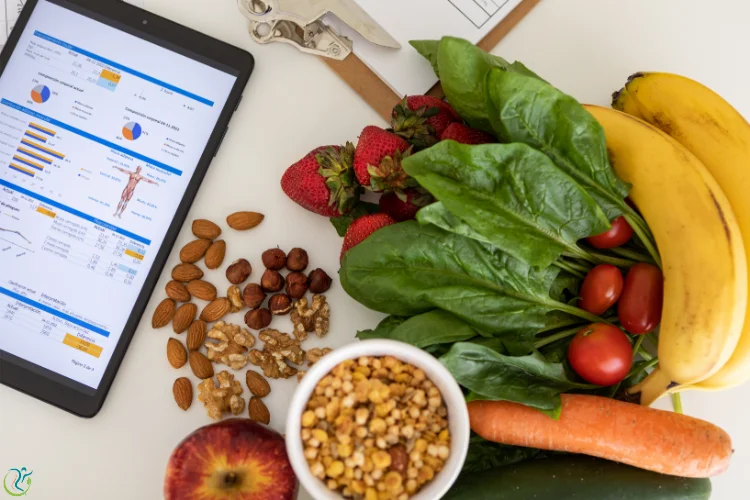
Kidney health plays a crucial role in overall well-being, and following a proper diet is essential for managing kidney conditions effectively. Proper dietary planning is essential for those with kidney conditions, helping to manage the disease and support a healthier lifestyle. In this article, we will guide you through the best practices for creating a diet chart for kidney patients, and we will also introduce a downloadable Diet Chart for Kidney Patients PDF that can serve as a valuable resource.
Why Is a Kidney-Friendly Diet Important?
Kidney disease is a major health issue that impacts millions globally. The kidneys play a crucial role in filtering waste and removing excess fluid from the bloodstream. When they are not functioning properly, the buildup of toxins in the body can cause a range of health issues. A kidney-friendly diet is designed to minimize the strain on the kidneys while ensuring that the body gets the nutrients it needs to function.
For kidney patients, dietary adjustments are often necessary. This may involve limiting certain foods, managing protein intake, reducing sodium levels, and ensuring proper hydration. By following a diet chart for kidney patients PDF, you can easily track the foods and nutrients that are beneficial and avoid those that could harm your kidneys.
Key Components of a Kidney-Friendly Diet

A kidney-friendly diet should focus on nutrient-rich foods that support kidney function while avoiding ingredients that could cause harm. Here are the key components that should be included in a diet chart for kidney patients PDF:
1. Protein Management
Protein is essential for overall health, but for kidney patients, it must be consumed in moderation. Excessive protein intake can put a strain on the kidneys as they work harder to filter the waste products produced by protein metabolism. Depending on the severity of kidney disease, your healthcare provider may recommend limiting protein intake.
- Best Protein Sources for Kidney Patients: Opt for high-quality protein sources such as lean meats, fish, eggs, and plant-based proteins like beans and lentils (in moderation). However, it’s important to consult with a dietitian to determine the appropriate protein intake for your specific condition.
2. Sodium Control
Too much sodium can cause high blood pressure and fluid buildup, which may aggravate kidney disease. Therefore, a diet chart for kidney patients PDF should focus on reducing sodium intake.
- Tips for Lowering Sodium Intake: Choose fresh, whole foods over processed foods. Avoid adding salt to meals and opt for herbs and spices for flavor. Also, be mindful of hidden sodium in canned goods, sauces, and condiments.
3. Potassium Management
As an important mineral, potassium helps maintain normal heart function and supports muscle health. However, kidney patients need to be cautious about their potassium intake. Too much potassium can lead to heart problems, while too little can cause muscle weakness.
- Low Potassium Foods: Kidney patients should focus on consuming foods low in potassium such as apples, berries, cabbage, and rice. Restrict the consumption of potassium-heavy foods like bananas, oranges, and potatoes.
4. Fluid Balance
Kidney disease can affect the body’s ability to manage fluid levels. In some cases, kidney patients may need to restrict their fluid intake to prevent fluid buildup. However, others may be advised to drink plenty of fluids, depending on their condition.
- Hydration Tips: It’s important to follow your doctor’s recommendations regarding fluid intake. Opt for water, and avoid sugary beverages and caffeine, which can exacerbate kidney problems.
5. Phosphorus Control
Phosphorus is a mineral found in many foods, but it can accumulate in the blood when the kidneys are not functioning properly. Elevated phosphorus levels can weaken bones and cause additional health issues.
- Low Phosphorus Foods: Choose foods such as egg whites, rice, and non-dairy alternatives. Avoid high-phosphorus foods like dairy, nuts, and beans, which can increase phosphorus levels in the body.
A Step-by-Step Guide for Creating a Diet Chart for Kidney Patients

Now that you understand the key components of a kidney-friendly diet, here’s a step-by-step guide to help you create your own diet chart for kidney patients PDF:
Step 1: Assess Your Nutritional Needs
The first step is to assess your current health status and understand your specific dietary needs. Consult with your healthcare provider or a registered dietitian to determine how much protein, potassium, sodium, phosphorus, and fluid you should consume.
Step 2: Select Kidney-Friendly Foods
Once you have a clear understanding of your nutritional requirements, begin selecting kidney-friendly foods. Concentrate on incorporating fresh fruits, vegetables, lean protein sources, and whole grains into your diet. Incorporate foods that are rich in vitamins and minerals to support overall health.
Sample Foods to Include:
- Fresh fruits like apples, berries, and pears
- Vegetables like cabbage, bell peppers, and zucchini
- Lean sources of protein like fish, poultry, and egg whites
- Whole grains like rice, oats, and quinoa
Step 3: Plan Your Meals
Next, plan your meals for the week. Create a balanced diet that includes all the necessary nutrients while limiting foods that could negatively impact your kidney health. A diet chart for kidney patients PDF should include daily meals for breakfast, lunch, dinner, and snacks.
Sample Daily Meal Plan:
- Breakfast: Oatmeal with blueberries, scrambled egg whites, and a glass of water
- Lunch: Grilled chicken breast, steamed broccoli, and a small portion of rice
- Dinner: Pan-seared trout with garlic sautéed spinach and a serving of mashed butternut squash
- Snacks: Apple slices accompanied by a small amount of almond butter for dipping
Step 4: Track Your Progress
Monitor your food consumption and make changes when necessary. It’s important to monitor how your body responds to different foods and consult with your healthcare provider to ensure you are following the right diet plan.
- Use a Printable Diet Chart for Kidney Patients PDF to record your daily meals and note any changes in your condition. This can be a helpful tool for both you and your healthcare team.
Downloadable Diet Chart for Kidney Patients PDF

To make it easier for you to follow a kidney-friendly diet, we’ve created a downloadable Diet Chart for Kidney Patients PDF. This chart includes a variety of kidney-friendly meal options, portion sizes, and tips for managing your condition through diet.
How to Download the Diet Chart for Kidney Patients PDF
Get your PDF by following the link provided.
Download Diet Chart for Kidney Patients PDF
Benefits of Using the Diet Chart for Kidney Patients PDF
- Easy to Follow: The PDF is designed to be simple and easy to follow, making it a great tool for people with kidney disease.
- Comprehensive Meal Plan: It includes a variety of kidney-friendly foods that are both nutritious and delicious.
- Customizable: You can adjust the chart according to your specific dietary needs and preferences.
- Printable: The PDF is printer-friendly, so you can keep it handy in your kitchen or on your phone for easy reference.
Tips for Sticking to Your Kidney Diet
Following a strict diet can be challenging, but it is essential for managing kidney disease. Here are some tips to help you stick to your diet chart for kidney patients PDF:
- Meal Prep: Plan and prepare your meals ahead of time to ensure you always have healthy, kidney-friendly options available.
- Stay Informed: Educate yourself about kidney disease and dietary requirements. The better informed you are, the more confidently you can choose the right foods.
- Consult a Dietitian: A registered dietitian can provide personalized guidance and help you make adjustments to your diet as needed.
- Monitor Your Health: Regular check-ups and blood tests will help you track the impact of your diet on kidney function and overall health.
- Monitor Your Health: Regular check-ups and blood tests will help you track the impact of your diet on kidney function and overall health.
A kidney-friendly diet is a crucial aspect of managing kidney disease and improving overall health. By following a diet chart for kidney patients PDF, you can ensure that you are getting the right nutrients while minimizing the risk of complications. Whether you are looking for a kidney-friendly meal plan or simply want to learn more about dietary changes, the tips and resources provided here will help you on your journey to better kidney health. Don’t forget to download our Diet Chart for Kidney Patients PDF to start planning your meals today!
Must read WellHealthOrganic.com: Neem and Aloe Vera Juice

Dear Readers, I’m Salman Khayam, the writer and founder of this blog, dedicated to bringing you valuable insights across a variety of topics. From dental and mental health to personal development, beauty, skincare, hair care, nutrition, fitness, and exercise, my goal is to empower and inspire through well-researched, engaging content.
